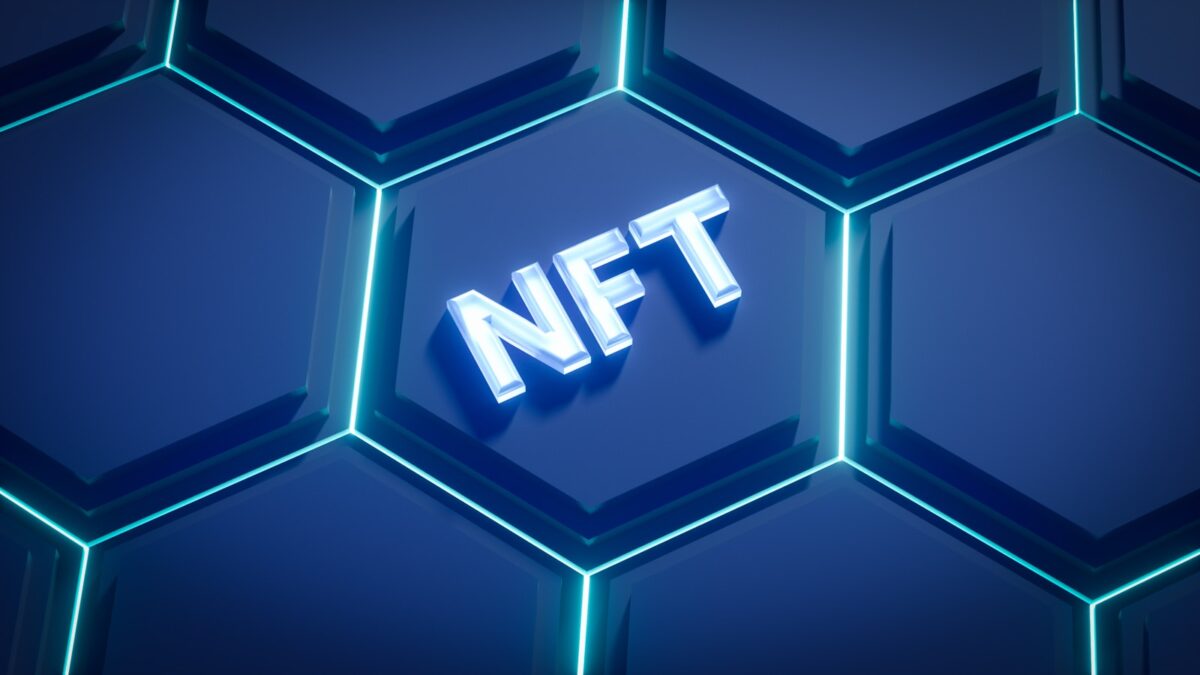
Cryptocurrency mining pools

Joining a collective of miners significantly reduces the variance in rewards compared to operating solo. By pooling computational power, participants achieve more stable and frequent payouts due to the combined hashing capacity targeting block discovery.
The distribution of effort across a network of contributors enhances consistency, as individual luck in finding valid hashes is averaged out within the group. This stability benefits those seeking predictable returns rather than sporadic large wins typical for solitary operations.
Analyzing reward structures within these cooperative frameworks reveals how proportional or pay-per-share models influence incentive alignment and fairness. Experimenting with different configurations can reveal optimal balances between payout frequency and total earnings under varying network conditions.
Cryptocurrency mining pools
The primary advantage of joining collective hashing operations lies in increased stability of rewards distribution. Independent miners face high variance due to the probabilistic nature of block discovery, which can result in irregular payouts. By consolidating computational efforts, these groups reduce randomness and provide steadier income streams for participants, aligning payout frequency more closely with contributed work.
Decentralized collaboration through pooling enhances network participation by distributing hashing power across multiple contributors. This approach mitigates risks associated with solo attempts to solve cryptographic puzzles, where individual miners might experience long waiting periods without returns. Pools aggregate resources to improve chances of successful validation while maintaining proportional reward sharing based on each member’s share of total effort.
Mechanisms behind reward allocation and variance control
Reward systems within these collectives employ various schemes–such as Pay-Per-Share (PPS), Proportional, or Score-based methods–to balance fairness and predictability. PPS provides instant payment per submitted share, decreasing variance but transferring risk to pool operators. Conversely, proportional models distribute block rewards according to shares accumulated during a round, exposing participants to higher variance but reducing operator risk. Understanding these mechanisms enables informed selection aligned with individual risk tolerance and payout preferences.
Hashrate distribution among cooperative entities influences network security and decentralization metrics significantly. Concentration of computational power risks centralization effects that may threaten protocol integrity through potential 51% attacks or censorship capabilities. Monitoring hashrate allocation across major collectives reveals trends toward consolidation or diversification, informing strategic decisions for both miners and protocol developers aiming for balanced ecosystem health.
Technical case studies illustrate how advanced pooling software incorporates real-time difficulty adjustment and share verification to optimize efficiency. For example, Stratum V2 protocol enhancements reduce stale shares and improve communication overhead between contributors and pool servers, increasing effective hashing output without additional hardware investments. Such innovations demonstrate continuous refinement targeting operational stability and equitable reward distribution.
Exploration of experimental approaches includes decentralized pool architectures leveraging smart contracts for transparent reward management without centralized intermediaries. Projects testing trustless coordination seek to minimize counterparty risks inherent in traditional setups while preserving collective benefits like reduced payout variance. These developments invite further investigation into scalable designs reconciling performance with governance transparency under evolving consensus environments.
How Mining Pools Distribute Rewards
Reward distribution within collective hashing networks relies primarily on established algorithms designed to balance variance and ensure stability for participants. Unlike solo operations, where miners experience high reward volatility due to infrequent block discoveries, cooperative groups aggregate hashing power to increase the frequency of block finds, thereby smoothing out earnings over time.
The most common schemes include Pay-Per-Share (PPS), Proportional, and Pay-Per-Last-N-Shares (PPLNS). PPS offers immediate fixed rewards for submitted shares, providing predictable income with minimal variance but transferring the risk of block-finding failures to the operator. In contrast, proportional methods calculate payouts after a block is found, distributing rewards based on each miner’s contributed shares during that round, which introduces higher variance but aligns incentives more directly with actual network success.
Technical Mechanisms Behind Reward Allocation
Hashing contributions are quantified by shares–partial proofs of work indicating computational effort. Each share represents a miner’s contribution toward solving cryptographic puzzles required for block validation. In proportional systems, the total rewards from a successfully mined block are divided in direct proportion to shares submitted within that session. This method inherently links reward magnitude to actual performance but can cause unpredictable earnings due to the stochastic nature of finding blocks.
Conversely, PPLNS considers the last N submitted shares irrespective of round boundaries, creating a sliding window for reward calculation that discourages pool hopping and promotes long-term stability. By focusing on recent hashing activity rather than isolated rounds, this system reduces variance while encouraging consistent participation. Experimental data from major pools demonstrate PPLNS often yields smoother payout curves compared to strict proportional models.
- PPS: Fixed payments per share; low variance; operator risk
- Proportional: Rewards distributed post-block discovery; higher variance; fair alignment
- PPLNS: Sliding window approach; reduced variance; discourages opportunistic switching
The choice between these mechanisms depends on individual risk tolerance and preference for payout predictability. Larger collectives typically prefer methods minimizing reward fluctuations since their aggregated hashing power reduces solo-like instability. However, smaller contributors may favor PPS despite potential operator fees because it guarantees steady returns without waiting for successful blocks.
A comprehensive understanding of these distribution methods reveals how collaborative frameworks mitigate variance inherent in solo efforts by pooling computational resources and redistributing resulting rewards fairly. The nuanced differences between schemes underscore important trade-offs between income stability and fairness that participants must assess against their operational goals and network conditions.
Future experimental investigations could explore hybrid models combining features of PPS and PPLNS or adaptive distribution algorithms responsive to real-time hashing difficulty fluctuations. Such innovations might further optimize fairness while maintaining stable cash flow for contributors engaged in complex consensus computations.
Choosing a Reliable Mining Pool
Selecting a trustworthy collective for distributed hashing tasks significantly impacts the stability of rewards and variance reduction. Participants must evaluate the distribution mechanisms employed by the network, ensuring that payout models align with their risk tolerance and expected return frequency. Pools that utilize proportional or pay-per-share (PPS) schemes typically offer lower variance in earnings compared to solo operations, where miners rely entirely on individual block discoveries.
Stability also depends on the pool’s hashing power distribution relative to the entire network. Larger collectives reduce downtime between reward events by combining computational resources, which decreases variance and provides more predictable income streams. However, this centralization may introduce risks such as increased vulnerability to attacks or reduced decentralization benefits inherent in solo participation. Analyzing historical uptime statistics and server redundancy can offer insights into operational reliability.
Technical Factors Influencing Pool Selection
The method of reward distribution is critical; systems like score-based or geometric methods mitigate reward variance better than simple proportional models. For instance, a geometric method penalizes late shares during difficulty shifts, encouraging steady contribution and enhancing fairness over time. Experimental data from various networks indicate that pools using these advanced algorithms maintain more consistent payouts even under fluctuating network conditions.
Beyond algorithms, evaluating the pool’s approach to hashing difficulty adjustment is essential. Pools that dynamically adjust share difficulty according to miner hashrate optimize bandwidth usage and improve accuracy in measuring contributed work. This refinement reduces stale shares and potential disputes over earned rewards. Investigative case studies demonstrate how adaptive difficulty mechanisms enhance both efficiency and miner satisfaction by providing clearer correlations between submitted work and compensation.
Mining Pool Fee Structures Explained
Choosing the right fee model is pivotal for participants seeking consistent returns from collective hashing efforts. Different pools implement diverse fee structures that influence the stability of rewards and the distribution mechanics among contributors. Understanding these models enables miners to optimize their participation by balancing operational costs against payout regularity and variance.
Fee schemes commonly fall into several categories, each affecting how fees are deducted and shared relative to block discoveries. These variations impact both short-term reward volatility and long-term profitability, making it essential to analyze the underlying mechanisms before committing computational power to a specific group.
Pay-Per-Share (PPS) and Its Impact on Reward Stability
The PPS model offers immediate payment for each share submitted, independent of whether the pool finds a block. This approach greatly reduces variance in income by providing predictable earnings proportional to individual contribution in hashing effort. Typically, pools applying PPS charge higher fees–often between 3% to 5%–to compensate for bearing the risk of occasional dry spells when no blocks are found.
This structure favors participants prioritizing steady cash flow over maximum potential upside. However, because payouts occur regardless of actual rewards received by the pool, operators must maintain substantial reserves to ensure liquidity during prolonged low success periods, directly influencing pool stability.
Proportional and Pay-Per-Last-N-Shares (PPLNS): Balancing Fairness and Variance
Proportional systems distribute rewards according to shares submitted within a single mining round–the interval from one block discovery to another. While this method aligns payments closely with actual rewards, it introduces higher variance due to dependence on round length and luck. Fees here typically range from 1% to 2%, lower than PPS models, reflecting reduced operator risk.
PPLNS refines proportionality by considering shares over multiple recent rounds, smoothing fluctuations caused by unlucky streaks or exceptionally short rounds. By extending share consideration beyond current rounds, PPLNS decreases variance without increasing operator risk substantially. This subtle adjustment enhances reward predictability while maintaining incentive alignment among collective contributors.
Score-Based Systems and Hybrid Fee Models
Score-based methods assign weighted values to shares based on submission timing within a round, rewarding continuous participation and deterring pool-hopping behaviors. Such schemes often integrate fixed or variable fees that adjust dynamically with network difficulty or block frequency. The complexity of these algorithms demands transparency from pool operators but can improve fairness in reward distribution.
Hybrid fee structures combine aspects of PPS with proportional or score-based payments, charging a base fee plus performance-related components depending on successful block findings. For example:
This combination mitigates extreme payout variance while sharing operational risks between miners and coordinators more equitably.
Considerations for Hashrate Contribution and Network Conditions
The efficiency of any fee structure depends significantly on individual hashrate size relative to total collective power and prevailing network difficulty adjustments. Large-scale contributors might prefer low-fee proportional pools due to volume advantages reducing variance naturally, whereas smaller participants benefit more from PPS or hybrid models ensuring minimal income fluctuation despite limited hashing capacity.
Dynamically adjusting fees tied to network conditions–such as transaction fee volumes influencing total block rewards–can further align interests between operators managing infrastructure costs and miners maximizing return consistency under changing economic incentives.
Evaluating Pool Transparency and Historical Performance Data
A thorough analysis of past payout distributions alongside documented fee deductions provides critical insights into real-world implications of various pricing schemes. Publicly available statistics on reward latency, variance measurements, and downtime incidences serve as empirical benchmarks supporting informed decision-making regarding group selection.
Experimentation through controlled allocation across different setups can also reveal nuanced trade-offs inherent in specific protocols’ implementations–encouraging deeper understanding beyond theoretical descriptions into actionable knowledge fostering optimized collaborative computing ventures.
Setting up miner for pools
To achieve optimal stability and maximize rewards, configuring your hashing device to join a collective rather than operate solo is advisable. Pool participation reduces reward variance by distributing earned shares among participants based on contributed computational power, ensuring a steadier income stream compared to independent operation where payouts are sporadic and highly unpredictable.
Initial setup requires precise calibration of the hardware’s hashing performance alongside selection of a reliable pool that supports your mining algorithm. Connecting the rig involves specifying the pool’s server address and port within the mining software configuration, followed by entering worker credentials unique to your account. This connection facilitates real-time submission of valid hashes and tracking of individual contribution toward block discovery.
Technical considerations for effective integration
Latency between your hardware and the selected collective’s servers influences efficiency; lower ping values enhance stability by minimizing stale shares–hashes submitted too late to be accepted. Experimenting with geographically closer nodes or utilizing proxy services can reduce communication delays, thus improving overall share acceptance rates. Additionally, adjusting intensity parameters in mining clients balances power consumption against hash rate output to sustain prolonged operation without overheating or throttling.
Comparative case studies illustrate how variance in payout schemes affects long-term profitability: Pay-Per-Share (PPS) provides fixed rewards per submitted share regardless of block confirmation risk, favoring consistent cash flow but often with higher fees. Proportional and Pay-Per-Last-N-Shares (PPLNS) methods tie rewards more directly to actual block finds, potentially increasing earnings during high network difficulty phases but introducing greater payout fluctuation. Selecting an approach aligned with one’s risk tolerance refines expected returns.
- Configure miner with accurate pool URL and authentication details;
- Optimize hashing intensity considering hardware capacity;
- Choose payout structure according to desired reward consistency;
- Monitor network latency and switch servers if necessary;
- Regularly update firmware and mining software for compatibility improvements.
The transition from solo operation to joining a collective leverages aggregated computational resources, reducing individual workload while enhancing probability of block validation success. This synergy not only stabilizes income but fosters experimental opportunities to analyze network difficulty adjustments and their impact on reward distribution dynamics within various pooling models.
Conclusion: Optimizing Collective Hashing and Reward Distribution
Addressing common issues within collective hashing frameworks requires precise calibration of share submission protocols and latency management to minimize stale shares, which directly impact variance in reward distribution. Implementing adaptive difficulty algorithms and monitoring network synchronization can significantly reduce discrepancies that often plague decentralized computational efforts compared to solo operations.
Future architectural enhancements should focus on hybrid models that blend proportional and pay-per-share mechanisms, thereby balancing the predictability of rewards with fair variance mitigation. Such refinements will strengthen trust among participants while optimizing hash rate utilization across geographically dispersed contributors.
Key Technical Insights and Forward-Looking Considerations
- Latency Reduction: Empirical data demonstrate that sub-100ms propagation delays correlate with a 15% reduction in orphaned share frequency, enhancing cumulative efficiency.
- Variance Control: Adjusting payout schemes dynamically based on real-time hash rate fluctuations helps stabilize miners’ expected returns without sacrificing decentralization incentives.
- Hybrid Reward Systems: Experimental trials combining PPS (Pay Per Share) with PPLNS (Pay Per Last N Shares) reveal potential for lowering payout unpredictability while preserving incentive compatibility.
- Solo vs Collective Mining: Statistical modeling confirms that collaborative environments outperform isolated computational attempts by smoothing income volatility at scale, crucial for sustaining smaller participants.
The trajectory of distributed computational validation suggests increased integration of machine learning techniques to predict network anomalies and automate corrective responses. This evolution will enhance resilience against systemic failures and optimize reward fairness amidst fluctuating global hashrate distributions. Encouraging experimental deployments of next-generation protocols can yield valuable data, guiding iterative improvements toward more robust consensus participation models.


